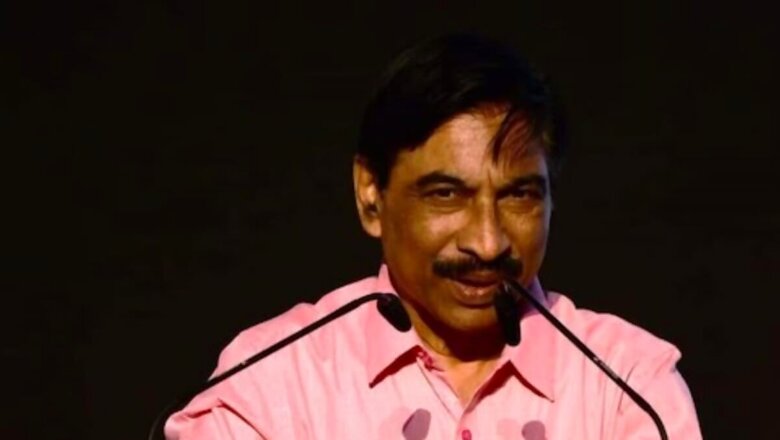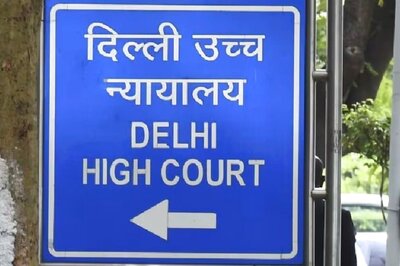
views
KK Muhammed, whose team was the first to discover the ruins of a temple in 1976 in the western side of the now-demolished Babri Mosque, has been one person about whom very little is known apart from his professional accomplishments. His team later went on to prove the claim of the Hindu side over the once-disputed land in Ayodhya. A new book — ‘Padma Bharti — Ordinary Indians, Extraordinary triumphs’, curated by Jay Jina, shed light on the amount of opposition he had to face all his professional life for having stood up for the truth.
Not just Aligarh Muslim University, but particularly left-leaning historian Irfan Habib and his associates, created hurdles for Muhammed all along, reveals the book. In fact, for the truth of Ram Mandir, he disregarded service rules that could have ended up in him losing his job. Muhammed published an article in a national daily opposing the prevalent theory that the mosque was all along there and the existence of any temple is a fiction, with his earlier findings as evidence.
FACING AMU AND IRFAN HABIB HEAD ON
Born in a poor Malayali family of daily wage earners in Koduvally near Kozhikode, Muhammed went on to become one of the most respected names in Indian archaeology ever. For being born in a family where one’s father operated a truck while his mother wanted him to be a religious priest, poverty was the smallest of Muhammed’s obstacles.
There were bigger challenges waiting as he entered the Aligarh Muslim University. “Despite his eagerness to study history, KK was quickly disillusioned at AMU. Due to his political affiliations, he found himself constantly struggling with Irfan Habib’s group in the history department, being rejected for a PhD programme and research scholarship in favour of less qualified candidates favoured by the establishment,” wrote Jina.
But it was just the beginning. He had to join ASI in what the author Ramanujam called “an attempt to escape the Marxist stranglehold” on AMU’s history department. When he joined ASI as a professional, he faced Habib again. He discovered the Ibadat Khana at Fatehpur Sikri, which raised his stature overnight. “With no ideological alignment to the Irfan Habib camp, he had already been demoted and even informally stopped from borrowing books from the university library,” revealed the author.
He further revealed how India’s Ram Mandir man had to withstand denial of recognition and had to face “false accusations”. But KK Muhammed refused to “recognise Prof. Habib’s flawed scholarship” and “documented his unfair dealings”.
FACING ASI AND THE FABLED ‘SYSTEM’
Though KK Muhamed had an illustrious 24-year stint with the Archeological Survey of India, he had to face multiple transfer postings, often when one would expect accolades. His first appointment was in Chennai, not in Agra, where he discovered the Ibadat Khana and created ripples.
It was in the 1990s when the Ram Janmabhoomi movement was at its peak. With his past experience in Ayodhya during the 70s with Prof BB Lal, he knew there was a temple “beneath the mosque”. “And so he published a letter in the Indian Express on 15 December 1990, attesting his findings and supporting the stand of a renowned bureaucrat–scholar, Iravatham Mahadevan, who had asked for a detailed excavation in Ayodhya,” reveals the book.
Such an act could attract “straightforward dismissal”. When he had to face senior IAS officers, he calmly answered he did it for “dharma”. However, Mr Mahadevan’s intervention with the bureaucracy saved his job by transferring him to Goa.
A promotion and two transfers later, when he reached Agra once again, troubles followed. “He stood firmly against a proposed shopping complex in the heritage area between the Taj Mahal and the Agra fort” which happened to be BSP Supremo Mayawati’s pet project. He again faced a transfer to Raipur where he communicated with Naxals to let the project go unharmed in Dantewada.
In Bhopal, not a punishment transfer, he convinced the dacoits to let his team carry on with exploration. But being the controversy magnet he was, he reached out to the RSS Chief when the mining lobby tried to threaten his work on the restoration of the temple in a BJP-ruled state.
KK Muhammed is not an ordinary Padmashri awardee. The life and time of this Kerala Muslim talking about ‘dharma’ and carrying on his work, come what may, is extraordinary, to say the least. He convinced Naxals, rebuked a dacoit on the run, wrote to the RSS Chief and stood up against historians like Irfan Habib for what he believed was righteous. This book is a sneak peek into the extraordinary lives of twelve such Padma award recipients whose life stories are no less than fables.

















Comments
0 comment